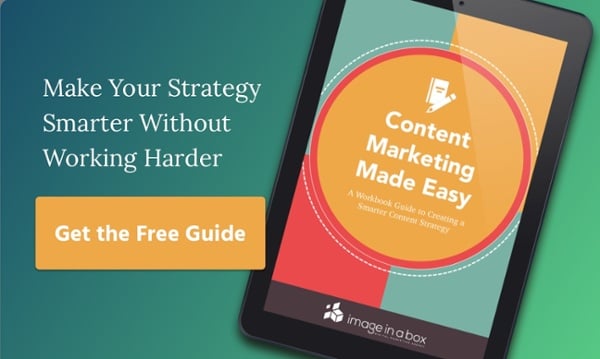Are you struggling to get your content seen by more people online?
There are currently over 82% of Americans are on social media and 307 million active internet users in the US alone.
That means today it's harder than ever to get your content discovered in the sea of competitive content out there vying for your user base.
It's tough! But don't worry, we're here to help.
Check out these four best practices for promoting your content on social media.
By following these practices, you'll be able to reach a larger audience and get more clicks, shares, and engagement for your content.
So, let's get started.
1. Find Your Target Audience
The first question for any social media marketing effort is, “Which platform should we use?” Luckily, the answer is simple: use the platforms your target audience prefers.
But who’s your target audience, and how do you find them?
If you haven’t already established a formalized target audience for your marketing efforts, now’s the time. Whole books have been written about the magic alchemy of chasing target audiences, but in most cases defining your preferred demographic is pretty straightforward.
Start by performing an audit of your current social media profiles, including which users engage with the content, how they engage (whether with comments, clicks, or other methods), and what they have in common when it comes to key characteristics like age, income, and lifestyle or digital habits.
Next, use that information to start building buyer or donor personas—brief descriptions of the type of person your content tends to attract.
Finally, use what you know about your target audience to review their activity on all social media platforms, then focus on the platform they use the most!

2. Set Goals for Social Media Content Promotion
Using clearly defined goals for all your social media content promotion is the best way to ensure your efforts are productive and effectively targeted.
Many marketers make the mistake of keeping their goals vaguely defined, without fully integrating metrics and other clearly understood goalposts that can be used to genuinely evaluate a campaign’s performance.
Instead, you should always focus on setting SMART goals for your social media content promotion. That is, always set goals which are:
- Specific
- Measurable
- Attainable
- Relevant
- Timely
3. Organic Content Promotion
You may be aware that many corporate marketing efforts focus on using paid social media techniques to reach their audience. However, there’s still plenty of room for organic social media content promotion, and for many types of marketing, it’s even the preferred method.
The key to good organic content promotion is to deliver compelling content that drives your readers to engage—whether simply by viewing the content or by performing follow-through actions like signing up for a newsletter or clicking through to a site.
Organic Content Promotion Best Practices:
- Use media assets whenever possible
Unfortunately, the most popular social media platforms don’t allow you to format the text on your posts. That’s why it’s important to use photos and videos. You will be more likely to grab your followers’ attention since it is more visually appealing than a block of text.
- Appropriately format content for each platform.
Here are some formatting tips for the four most-used social media platforms:
- Twitter and Instagram: Use plenty of hashtags and tagging, keep the tone informal and fun, and de-emphasize long text to focus on short blurbs, visuals, and links
- Facebook: Use fewer hashtags and a fun, informal tone
- LinkedIn: No emojis or hashtags, prefer a formal or semi-formal professional tone
- Post at the right times for each platform
People use platforms in very specific ways, at very specific times, in very specific population groups. That means the difference between a 1 PM post on Facebook and a 3 PM post on Twitter is huge and probably has entirely different audience characteristics!
Start by consulting existing research about user activity on each specific platform, then use that information to set up your own preliminary posting schedule based on what you know of your audience. Experiment to see how your target demographics respond to your posts, then adjust your finalized schedule accordingly.

4. Paid Content Promotion
Using paid content promotion can be a good fit when you need to reach highly specific audiences, or when you need a more regimented method for handling your budget and ROI (return on investment) requirements.
Paid content promotion is also a good idea when you’re not making an impact with organic promotion, or when you think your existing content is good enough to keep an audience interested, but you can’t breakthrough with the sort of brand name recognition that makes them pay attention to begin with.
What You Need to Successfully Promote Content on Social Media
- A flexible budget to account for varying click-through rates and other engagement metrics that change how much your ad campaigns might cost.
- A timeframe that’s long enough for your campaign to make an impact, while staying within budget.
- A highly specified target audience, so you can ensure each advertising dollar is likely to yield the maximum impact.
Boosted Posts vs. Facebook Ads
Make sure you understand the various advertising options on Facebook. Facebook boosted posts are simply promoted standard posts from your existing business page. They are the simplest way to advertise on Facebook and don’t have all of the customization features provided by Facebook Ads Manager. The ad optimization and goal settings for boosted posts are more focused on Page likes, comments, and shares. Think of a boosted post as a way to increase your organization’s brand awareness.
Facebook Ads are the traditional “full ad” experience you likely expect. These ads offer a variety of options for targeting, designing, and optimizing your ad buys, and a wealth of metrics for monitoring the campaign’s performance. For example, with Ads Manager, you have full control over the design and copy of the ad, plus you can specify your advertising objectives to optimize for online orders, website conversions, and more.
Whatever method you choose, the most important points to remember are these: Find your audience, track your audience, then optimize your content promotion to maximize its impact for each individual platform.
Want to create a smarter strategy for planning, creating, and promoting your content?
Then check out our free workbook guide, Content Marketing Made Easy, to learn time-saving tips for each step in the process. Plus, there's room for you to brainstorm ideas for your organization's content. Click below to learn more and get the guide today!
